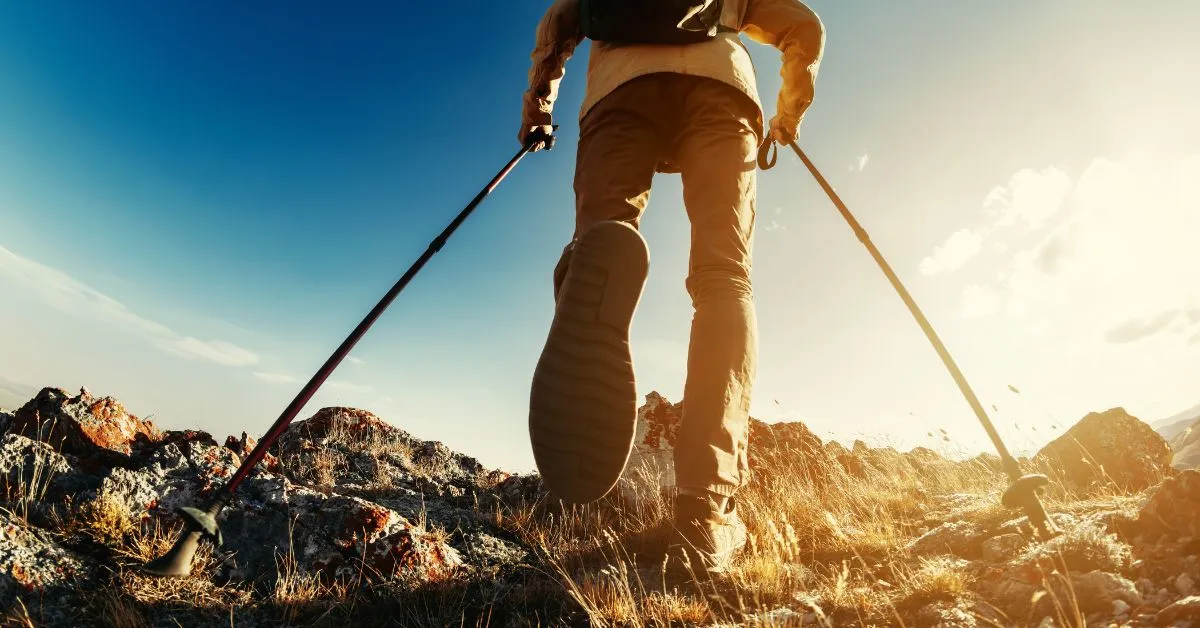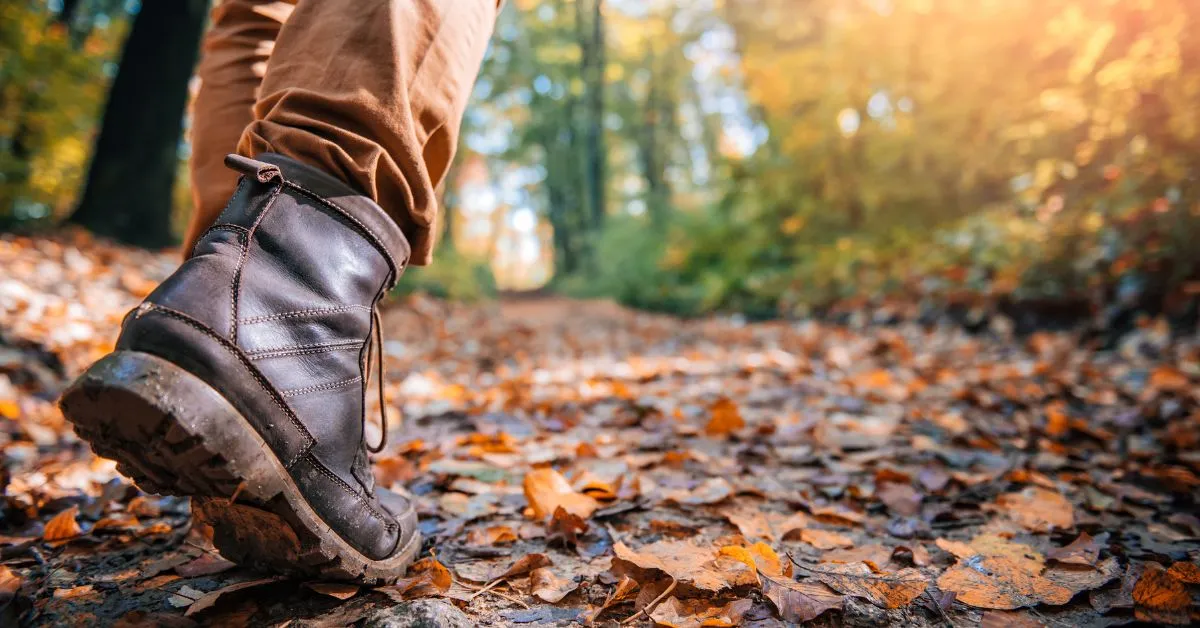Is hiking good for weight loss?
The answer is a resounding yes! Hiking is not only a great way to burn calories, but it’s also a low-impact exercise that people of all ages and abilities can enjoy.
Plus, hiking in the great outdoors has numerous other benefits, including reducing stress, and improving mental health.
So, hiking is definitely worth considering if you’re looking for a fun and effective way to lose weight.
This guide will give you all the answers to your questions regarding hiking to lose weight.

Why Is Hiking Good For Weight Loss?
There are many reasons why hiking is good for weight loss. First of all, it’s a great way to burn calories. A 155-pound person can burn approximately 298 calories by walking for just 30 minutes at a moderate pace.
And, the more strenuous the hike, the more calories you’ll burn.
Hiking is a low-impact form of exercise, which means it’s gentle on the joints. This is ideal for people who are overweight or obese, as they may have difficulty doing high-impact activities such as running.
Hiking is also a great way to get some fresh air and Vitamin D, both of which are essential for good health.
And as we mentioned before, hiking can help to reduce stress and improve mental health.
How Can I Make Hiking More Effective For Weight Loss?
If you want to make hiking more effective for weight loss, there are a few things you can do.
First of all, try to hike for at least 30 minutes each time. This will help you to burn more calories and reach your weight loss goals. Ideally, you’ll hike longer. Aiming for one hour or more per hike is a great goal.
That said, if you’re planning a full day of hiking, it’s essential to take breaks and rest when you need to. This will help your body to recover, prevent injuries, and ensure you can complete the hike without getting too exhausted.
A multiple-hour hike is an excellent way to burn calories and lose weight, but it’s not the only way. Other options are available if you don’t have time for a long hike.
You could try a shorter hike, or even some basic walking. And, if you really want to ramp up the intensity, you could try interval training. This involves alternating between periods of high-intensity activity and periods of low-intensity activity.
For example, you could walk for two minutes, and then jog for one minute. Repeat this cycle for the duration of your hike.
Secondly, hike at a moderate to vigorous pace. This means walking at a speed that gets your heart rate up, but is still comfortable enough to carry on a conversation.
And finally, try to include some hills or inclines in your hike. This will not only help you to burn more calories, but it will also tone your legs and bum.
Can You Really Lose Fat By Hiking?
Yes, you can definitely lose fat by hiking. In fact, hiking is one of the best exercises for burning fat. This is because it’s a low-impact activity that uses large muscle groups.
When you hike, your body has to work harder to move your heavy legs and feet up inclines and over obstacles. This helps to tone your muscles and burn fat.
Plus, hiking at a moderate pace can help you to burn more calories than walking at a leisurely pace. And, as we mentioned before, the more strenuous the hike, the more calories you’ll burn.
So, hiking is a great option if you’re looking for an effective way to lose fat.
How To Burn More Calories When Hiking
While hiking burns a lot of calories, there are a few different ways to burn even more calories when hiking.
Let’s take a look at some ideas.
Hike For Long Periods
You can try hiking for more extended periods of time. As we mentioned, aim for at least 30 minutes per hike, but longer hikes will help you burn even more calories.
Hike Up Hills Or Inclines
Including hills or inclines in your hike will make it more challenging and help you to burn more calories.
If you hike with hiking poles, you’ll also be able to get a great upper body workout. This will help you to tone your arms and burn even more calories.
Hike At A Faster Pace
You can also try hiking at a faster pace. Walking at a moderate pace is excellent for burning calories, but if you want to burn, even more, try hiking at a vigorous pace.
This means walking at a speed that gets your heart rate up, but is still comfortable enough to carry on a conversation.
Having a smartwatch or a fitness tracker like a Fitbit can help you see your heart rate.
Carry A Backpack
If you want to make your hike even more challenging, try carrying a backpack. This will add resistance and help you to burn more calories.
You could also try filling your backpack with weight, such as sandbags or water bottles. Just be sure not to overload it, as this could cause injuries.
How To Get Started With Hiking For Fat Loss
If you’re new to hiking, or if you’re looking to start hiking for weight loss, there are a few things you need to do in order to get started. Let’s take a look.
1. Get The Right Gear
First of all, you need to make sure you have the right gear. This includes comfortable walking shoes, appropriate clothing, sunscreen, a hat, water, and snacks.
You can read our guide to the best hiking snacks and lunches for inspiration.
2. Choose The Right Trail
You also need to choose the right trail. Start with an easy trail and work your way up to more difficult trails. The same applies to the distance and length of hikes.
For example, start with a 30-minute easy trail, and then work your way up to longer and more challenging trails.
3. Warm Up And Cool Down
Before you start hiking, it’s essential to warm up your muscles. This will help to prevent injuries. A simple warm-up could involve walking at a leisurely pace for 5 minutes.
After your hike, it’s also important to cool down. This will help your body to recover and repair any damage that has been done to your muscles.
A cool-down could involve walking at a leisurely pace for 5 minutes, followed by some stretching.
4. Listen To Your Body
It’s essential to listen to your body. If you’re feeling tired or sore, take a break. And if you’re ever in doubt, it’s always best to err on the side of caution.
5. Set Goals
Finally, make sure to set goals. This will help you to stay motivated and on track. For example, your goal could be to hike 2 times per week for 30 minutes each time.
Start by setting small, achievable goals. Then, once you’ve reached your initial goal, you can start to increase the difficulty level.
Final Thoughts On Hiking To Lose Weight
Hiking is a great way to lose weight. It’s low impact, it’s easy on the joints, and it’s a great workout. Plus, it’s an activity that can be enjoyed by people of all ages and fitness levels.
If you want to lose weight, we recommend you start hiking for at least 30 minutes 2-3 times per week.
And, if you want to burn even more calories, try adding hills or inclines to your hike, hiking at a faster pace, or carrying a backpack.
Remember to listen to your body and take breaks when necessary. And make sure to set goals to stay motivated.
Now it’s time to hit the trails!
Want to learn more about hiking? Read one of the following guides:




